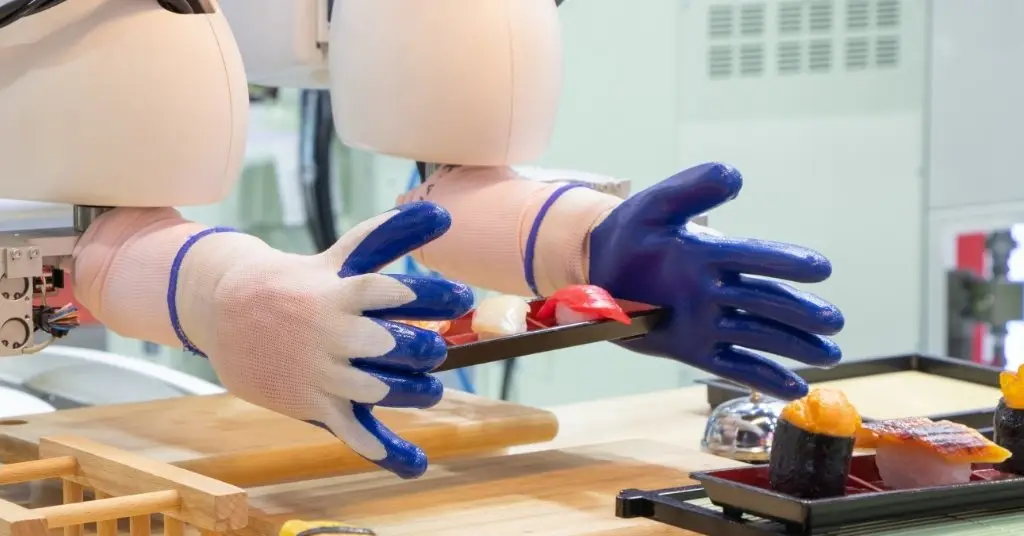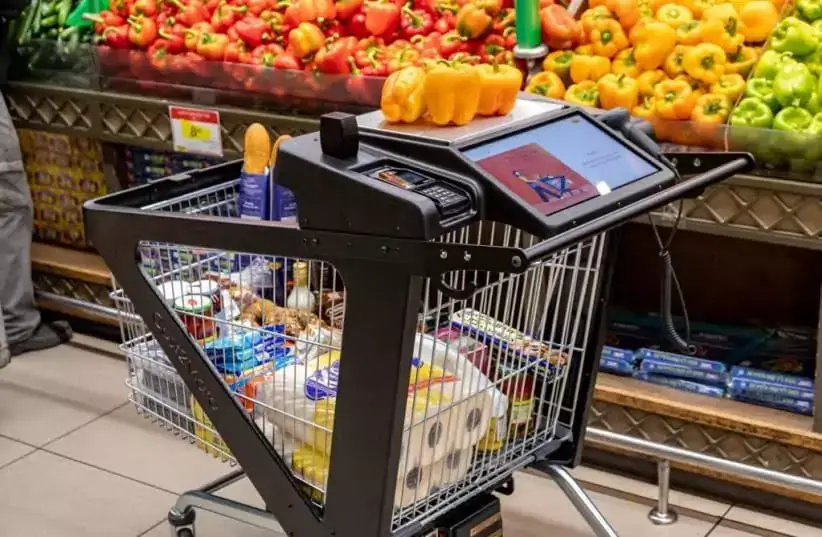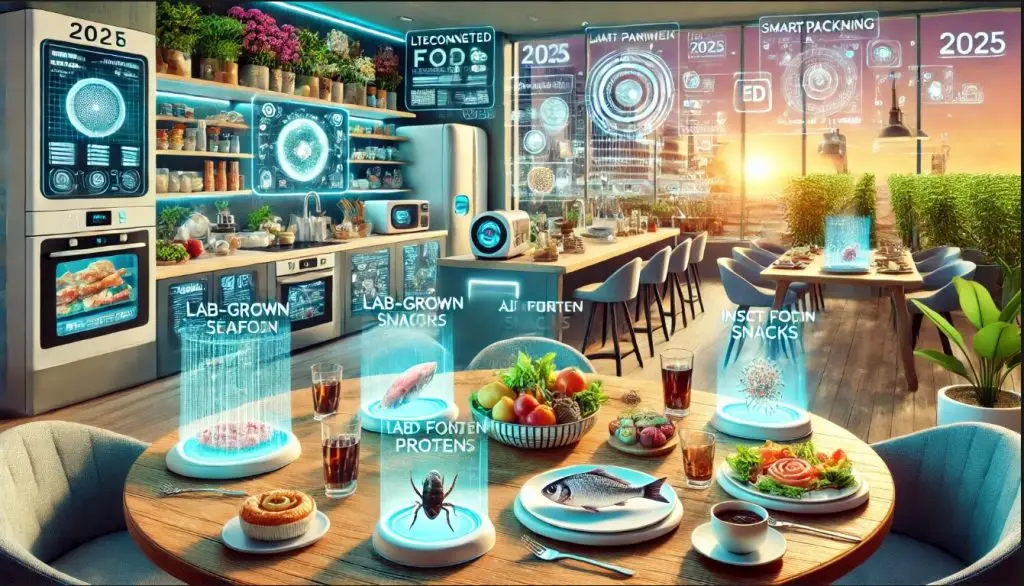A Growing Trend in Restaurant Tech
The global restaurant technology market exceeded $59.3 billion in 2024 and aims for over $314 billion by 2033, with 16%+ CAGR
- Within this, AR/VR-enabled food and beverage tech is projected to grow rapidly—from $40 billion in 2024 to $62 billion by 2029
- Deloitte and Snapchat estimate around 75% of global consumers—and growing U.S. audiences—as frequent AR users by 2025
- These numbers confirm that restaurants integrating AR/VR are not just embracing gadgets—they’re aligning with evolving customer expectations for immersive, tech-enhanced experiences.
What AR & VR Look Like in Restaurants Today 🇺🇸
1. AR-Driven Interactive Menus
Customers scan a QR code and instantly see 3D dish visualizations, portions, ingredients, and allergen info—no app download required
- These menus also enable personalized upsells, suggesting pairings or premium options based on past orders or dietary preferences
2. Immersive VR Dining & Storytelling
Some U.S. venues immerse diners via projection mapping or VR sets: e.g. Bang Bang Bangkok in NYC simulates a Bangkok bus tour while guests enjoy a 10-course menu tied to the experience
- VR dining can transport guests to virtual vineyards, beachside tables, or cultural scenes—adding storytelling and atmosphere far beyond décor
3. Staff Training & Simulation
Chains like KFC and Honeygrow are using VR training games to simulate real kitchen environments and food prep scenarios, increasing engagement and boosting retention
- Studies show AR-based training improves confidence and service performance among staff
4. Sustainable Dining & Ingredient Transparency
“DinAR” is a pioneering AR application that overlays nutritional and origin data—and even sustainability scores—on dishes, allowing diners to make eco-conscious choices
5. Dining Atmosphere Augmentation
Experimental studies show that AR table settings and lighting customization can reduce perceived wait times and enhance overall customer satisfaction, giving diners more control over ambiance
The Benefits: Why U.S. Restaurants Are Investing
Enhanced Engagement & Satisfaction
AR menus reduce ordering uncertainty and boost confidence—leading to more satisfaction and potentially higher check sizes
- Experiences like projection-mapped dining rooms or VR tours create memorable, shareable moments that encourage social media buzz
Operational Efficiency & Upselling
Visual menu previews speed up decision-making and minimize ordering errors.
AR can highlight pairings, daily specials, or combos to increase average spend per table
Staff Development & Retention
VR training translates to faster onboarding, better-prepared staff, and reduced turnover—a pressing need given U.S. restaurant turnover rates
Brand Differentiation in Competitive Market
Nearly three-quarters of U.S. restaurateurs say technology is a competitive edge—and AR/VR is one of the most innovative tools in their toolkit
Transparency & Personalized Dining
AR storytelling and sustainability overlays give diners confidence in food sourcing and preparation—especially appealing to U.S. consumers who value transparency and ethics
Challenges & Considerations
Initial setup cost & hardware investment can be a barrier for small restaurants
- Digital accessibility matters—some customers may lack AR-capable phones or feel overwhelmed by tech-heavy menus
- Data privacy concerns: tracking engagement or collecting preferences from AR interactions must comply with privacy regulations
Spotlight: U.S. Examples & ROI
In Brooklyn, Bang Bang Bangkok charges ~$357 for its immersive virtual Bangkok journey tied to a 10-course menu—and gets strong reviews for storytelling and novelty
- KFC’s VR training reportedly reduced turnover by making training immersive and engaging; Honeygrow credits VR training with stronger staff retention among millennials
While national AR menu rollouts are still emerging, early adopters like upscale and experiential venues show how AR/VR can translate to higher checks, longer dwell time, social media traction, and operational efficiency.
What the Data Shows
| Metric / Trend | Data & Source |
|---|---|
| Restaurant tech market size | $59.3 B (2024) → $314B by 2033, 16% CAGR |
| AR/VR global market growth | $40B (2024) → $62B by 2029 |
| AR user adoption | 75%+ globally using AR regularly by 2025 |
| Consumer tech view | 0.75 operators see tech as competitive edge |
| Case ROI anecdotal | Training reduces turnover; immersive dining adds high-ticket experiences |
Looking Ahead: What U.S. Restaurants Should Do
Start small with AR menus—pilot in a few locations and measure order accuracy, upsell rate, customer satisfaction.
Use VR training selectively—especially for onboarding staff or seasonal hires.
Design immersive experiences (e.g. themed dining nights) that tie AR/VR visuals to menu storytelling.
Promote eco-awareness—use AR overlays to share ingredient sources, sustainability metrics, or carbon footprints for eco-conscious diners.
Prioritize UX & data privacy—ensure interfaces are intuitive, accessible, and trust-compliant.
Conclusion:
In 2025 America, AR and VR in restaurants represent more than tech gimmicks—they’re strategic levers for driving engagement, revenue, and loyalty. As diners increasingly seek experiences that blend taste, storytelling, and transparency, restaurants that embrace AR/VR technology gain a compelling edge in a crowded market.
Would you like me to dive deeper into specific tools (Kabaq, Rock Paper Reality, etc.) or conduct a competitive analysis of AR-enabled U.S. dining concepts?




